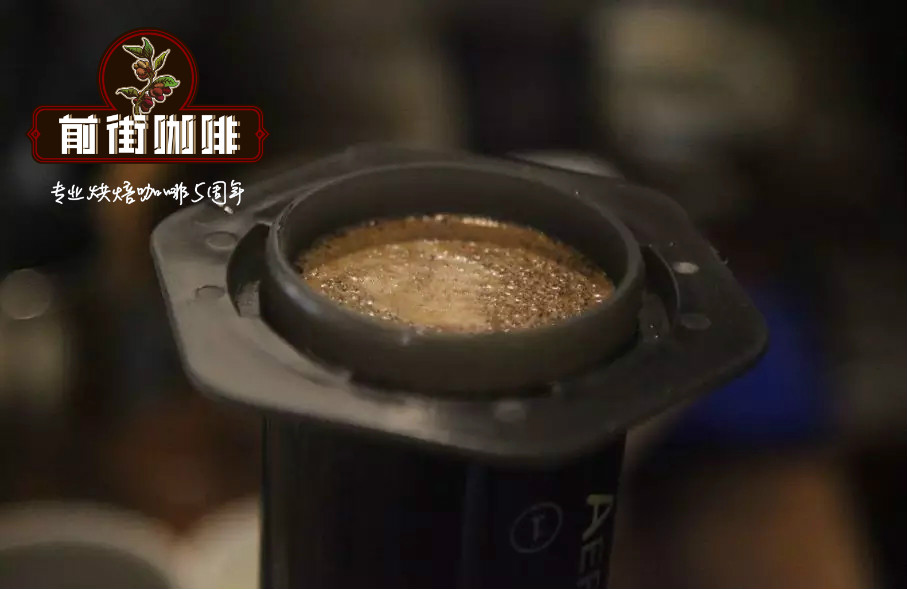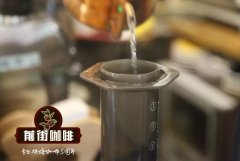What's the taste of Yemeni mocha coffee? Yemeni mocha Coffee introduces the characteristics of mocha coffee

Professional coffee knowledge exchange more coffee bean information please follow the coffee workshop (Wechat official account cafe_style)
Yemen was the first country to use coffee as a cash crop. Legend has it that Muslim Sufi pilgrims were introduced from Ethiopia in the 6th century. The most correct spelling should be Al-Mahka, which is Arabic spelling, growing on steep terrain with little rainfall, poor land and insufficient sunshine. This unique and difficult condition for coffee growth has given birth to an irreplaceable Yemeni mocha. Wild Yemeni beans are mostly unmanaged, mature and dry after natural growth, farmers only do the work of picking up, the overall style [wild] or [natural] with earthy flavor is extremely complex, and for some people it is spicy, but you must try it sometime anyway. if you also fall in love with him deeply, it will be the beginning of a whole new coffee journey.
When it comes to Yemeni coffee, "mocha" must be mentioned. Everyone has heard of "mocha coffee". What exactly is "mocha"?
There are many answers to this question. Some people say that mocha is a certain place of origin, and some people remember that mocha is sweet chocolate coffee. In fact, authentic mocha coffee is only produced in the Republic of Yemen in the southwest of the Arabian Peninsula, grows on steep hillsides at elevations of 3, 000 to 8, 000 feet, and is the oldest coffee in the world.
As early as more than 500 years ago, Yemen produced coffee in an ancient way. In the early 17th century, the first batch of Yemeni coffee sold to Europe was exported through the ancient port of Mocha, which surprised Europeans. The delicious coffee shipped from the port of Mocha was called "mocha coffee", which is the origin of the name "mocha coffee".
Neighboring Ethiopia across the Red Sea also sells coffee through the port of Mocha, so Ethiopian sun-treated coffee is often called mocha. (such as Mocha-Hara Ethiopia Harrar) now the old port of Mocha has long been abandoned due to sediment deposition (today's place name Al Makha) and is exported by the northwestern port of Hudaida (Hodeida). However, people have long been accustomed to the name of Mocha, which is famous to the sky.
Deep-roasted Yemeni coffee often shows a chocolate-like caramel sweet flavor, so when you see the word "mocha coffee", it may refer to pure Yemeni coffee, or neighboring Ethiopian coffee, or simply. In any case, for picky coffee lovers, only real Yemeni coffee is qualified to be called "mocha coffee".
The word "mocha" has a variety of spellings: Moka, Moca and Mocca are all common spellings, and as many as four local spellings have been seen on gunny bags and documents of Yemeni coffee: "Mokha", "Makha", "Morkha" and "Mukha", all with the same meaning.
As early as the end of the 17th century to the early 18th century, the first coffee beans drunk by Europeans actually came from the Yemeni mocha, so the term "mocha" became synonymous with coffee, which can be associated with coffee. However, today, three centuries later, Yemeni coffee is not as rich as it used to be, with an annual output of only about 10,000 metric tons, which is simply insignificant compared with other countries. However, the Yemeni mocha "game" boutique coffee beans are still missed by many people. Yemeni mocha is fascinating with complex flavors such as red wine, wild game, dried fruit, berries and chocolate.
END
Important Notice :
前街咖啡 FrontStreet Coffee has moved to new addredd:
FrontStreet Coffee Address: 315,Donghua East Road,GuangZhou
Tel:020 38364473
- Prev

Standard beans of Coffee-Colombian Coffee introduces how to drink Colombian coffee?
Professional coffee knowledge exchange more coffee bean information Please pay attention to the coffee workshop (Wechat official account cafe_style) Colombia produces about 12% of the coffee beans in the world, although the output is not as good as Brazil, but the coffee beans are of good quality and mostly belong to high altitude areas, after wet processing, mellow and thick, sweet and sour smooth taste, strong road. There is a peculiar flavor of sweet potato peel for coffee.
- Next

What does geisha coffee have to do with geisha mountain? How to choose geisha coffee from different countries?
Professional coffee knowledge exchange more coffee bean information please follow the coffee workshop (Wechat official account cafe_style) geisha coffee beans can be said to be the most famous and expensive variety of coffee beans in recent years! And this origin can be said to be the boutique coffee of Panama. As early as before 2004, Panamanian boutique coffee was not valued by the international coffee industry, but in 2004.
Related
- Detailed explanation of Jadeite planting Land in Panamanian Jadeite Manor introduction to the grading system of Jadeite competitive bidding, Red bid, Green bid and Rose Summer
- Story of Coffee planting in Brenka region of Costa Rica Stonehenge Manor anaerobic heavy honey treatment of flavor mouth
- What's on the barrel of Blue Mountain Coffee beans?
- Can American coffee also pull flowers? How to use hot American style to pull out a good-looking pattern?
- Can you make a cold extract with coffee beans? What is the right proportion for cold-extracted coffee formula?
- Indonesian PWN Gold Mandrine Coffee Origin Features Flavor How to Chong? Mandolin coffee is American.
- A brief introduction to the flavor characteristics of Brazilian yellow bourbon coffee beans
- What is the effect of different water quality on the flavor of cold-extracted coffee? What kind of water is best for brewing coffee?
- Why do you think of Rose Summer whenever you mention Panamanian coffee?
- Introduction to the characteristics of authentic blue mountain coffee bean producing areas? What is the CIB Coffee Authority in Jamaica?

